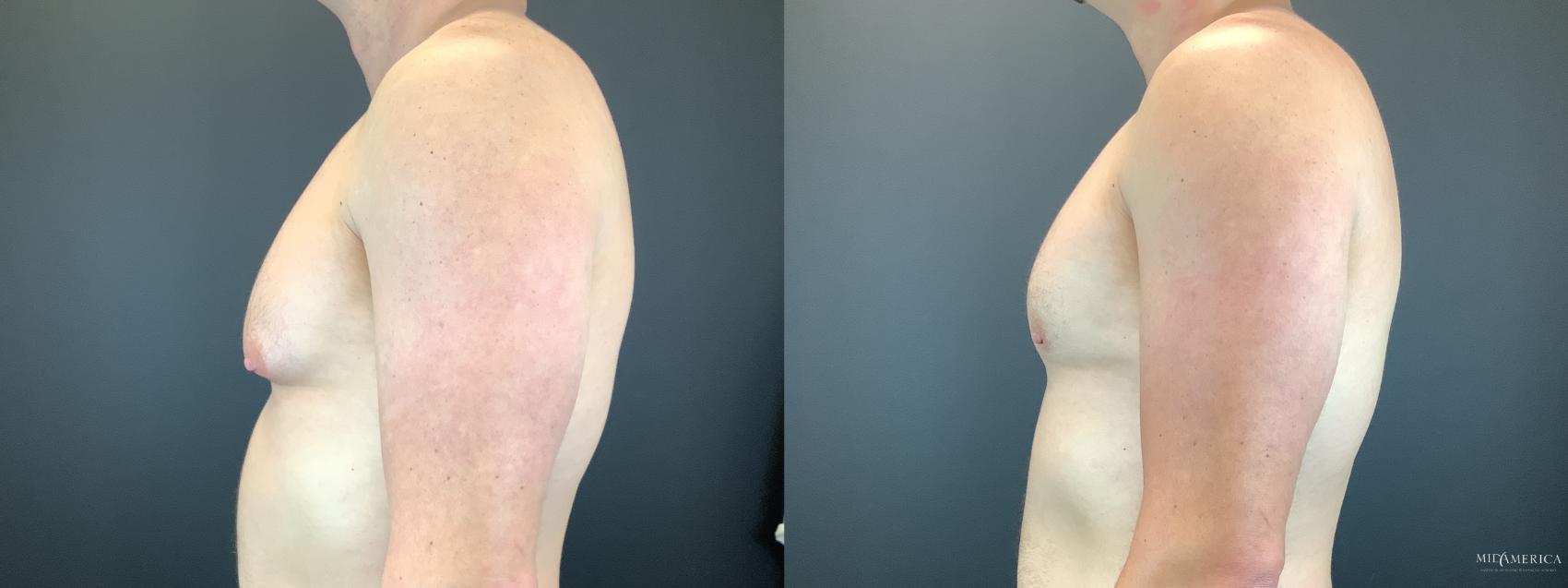Gynecomastia refers to the abnormal development or enlargement of breast tissue in men. Larger male breasts are not a significant health concern, but they can cause psychological issues. These males typically have a negative self-image and are uncomfortable with certain situations, particularly sexual intimacy. The physiological problem is common among men with gynecomastia.
If you suffer from this type of physical disorder, you should see a doctor. This article will outline the most effective non-surgical and surgical treatments for Gynecomastia. First, let’s examine the meaning of gynecomastia.
GYNECOMASTIA VS PSEUDOGYNECOMASTIA
Breasts that are large are not a sign of “gynecomastia.” Pseudogynecomastia is a condition that could happen to overweight and obese males, and is the result of the bilateral accumulation of fat on their chests. True gynecomastia involves the growth of breast glandular tissue more than weight gain.
That is to say an overweight person could easily eliminate the fat mass by performing exercises as well as liposuction however gynecomastia is not able to be removed through weight loss. We will, however, offer methods to rid yourself of large breasts, regardless of regardless of whether you have real or pseudo gynecomastia.
Best Supplements for Muscle Growth
- D-Bal Max:Best muscle growth supplement overall
- CrazyBulk Bulking Stack: Best bulking stack for bodybuilding
- Testo-Max: Best for body fat, and energy
- Dianabol : Best choice for muscle building (Most Popular)
- Deca Durabolin : Best choice for stamina
- Trenbolone : Best choice for muscle mass and recovery
- Sustanon : Best choice for testosterone levels
- Crazy Nutrition Mass Gainer: Best mass gainer shake for bulking
- HGH-X2:Best human growth hormone booster
- OSTA 2866: Best SARM alternative for fast muscle growth
- Intensive Pre-Train: Best pre-workout supplement
- Ultimate CRN-5:Best creatine
- CrazyBulk Female Cutting Stack: Best for women
- 100% Tri-Protein: Best protein powder

GYNECOMASTIA CAUSES
Other than obesity, which causes pseudogynecomastia and other hormonal concerns, hormones are the primary cause of breast enlargement in men, as well as true gynecomastia. Estrogen can stimulate female characteristics such as breast growth, whereas testosterone primarily controls masculine characteristics such as hair growth.
Males and females are both capable of producing two in their bodies. However, testosterone is the primary hormone in men and oestrogen is the primary hormone in women. A disparity between the oestrogen and testosterone hormones has the potential to disrupt a physiological process. In males, gynecomastia could be caused by an increase in oestrogen relative to testosterone.
The majority of men’s hormone disorders are caused by a variety of stimuli. Certain diseases, malnutrition, genetics, cancer, anabolic steroid use, and certain medications can cause an increase in the hormoneexcess hormone production relative to testosterone, which can lead to the development of breast tissue in men. You can prevent the development of gynecomastia by avoiding the use of illegal substances and alcohol, and by evaluating the potential side effects of medications before beginning treatment.
Another possible cause of gynecomastia is the hormonal changes that occur as a normal component of puberty and childhood development in boys. In this case, gynecomastia may be caused by a transitory hormonal imbalance within the body. After two or three weeks, or a maximum of three years, the condition will completely resolve on its own. However, breasts that are larger than 4 centimetres in diameter could not completely diminish.
SIGNS and SYMPTOMS OF GYNECOMASTIA
The first indication of gynecomastia is the swelling of breasts in males. It can be caused due to the swelling of glandular tissues in the nipple region, rather than fat deposits. The condition is typically related to the sensation of tenderness whenever the nipples are in contact. In the majority of cases the patient does not feel any discomfort in their chest however they may feel that it is a bit stiff.
Diagnosis
Based upon your health and medication history, your doctor may identify gynecomastia that is real. A thorough physical examination is essential to identify the root of the problem. The doctor may request for mammography or blood tests to detect gynecomastia. They will also find the root causes. The next step is further tests, such as CT scans, MRI, tissue biopsies and testicular ultrasounds are generally required depending on the findings of your initial tests.




